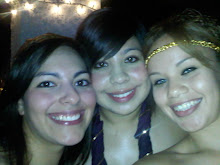
J. M. Coetzee’s book, Elizabeth Costello, is intentionally vague to make the reader think about the several different perspectives one should take into consideration when reflecting on the treatment of animals. A comparison of Costello and Red Peter, a monkey in Franz Kafka’s Report to an Academy, shows that she has no real purpose but to inform the audience of what she knows. She chooses the topic of human’s treatment of nonhuman animals and relates the topic to the Holocaust. “‘Holocaust’ originally denoted ‘a Hebrew sacrifice in which the entire animal was given to Yahweh [God] to be consumed by fire’ (732). This definition of the word shows that while we think of the term as being reflective of a historic atrocity it was originally was an action committed against animals.

This event has recently reconnected to its original definition but many people do not see it in that way, they see it as an offense to those who suffered in Nazi Germany. In the course packet article, “Can the Treatment of Animals Be Compared to The Holocaust?” Sztybel, a descendant of those affected by the Holocaust displays 39 points that show the similarities between the two, some of these points were also made in Coetzee’s book. In both situations people “said that, while in a sense they might have known, in another sense they did not know, could not afford to know, for their own sake” (64). The fear of realizing that harm is being inflicted on another silences those who know because of the consequences that might come their way. Speaking out against the actions of those in power during Nazi Germany meant risking your life.

In the case of animal cruelty speaking out means finding a new lifestyle and really realizing the quantity of animals affected by one’s daily actions. In both situations you must fight against those who are like you, maybe not in ideology but in being thought of as reasoning beings. The importance of reasoning is significant in the argument for the acceptance of animal cruelty and since those who suffered during the Holocaust were thought of as vermin, they too were probably thought of as unreasoning beings.

Another similarity is that we cannot find it within ourselves to be in the shoes of those who are suffering. We seem to think of ourselves as in the past in the present and in the future but it is almost impossible for us to think of ourselves as the other. “Now I ask: if we are capable of thinking our own death, why on earth should we not be capable of thinking our way into the life of a bat” (77)? In both situations, the horrors inflicted on others could be prevented if we were to stop and just imagine what might have we felt if we were on the other side. I think about so many people in Nazi Germany who would pass by piles of dead bodies and not say a word in objection because they figured it didn’t affect them.

I think this might be the reason that most animal cruelty is done behind closed doors so that instead of just trying to ignore what is going on people don’t even have a chance to look it most of the time. There are several other points that are presented in the book and article but the understanding of discriminatory oppression which “involves a willingness to harm a given class of beings, on the basis that those individuals are different in some specific way” (734) is essential to why these events have happened and continue to happen. All points are embodied in this statement in my opinion since it is all differences that allow for mistreatment and have led to a similarity between all of the oppressed. While several negative connection have been made I’ve also found an extremely positive one that gives hope about the continued effort against those who oppress others. The connection I found most interesting is that those that have fought for animals are those that have fought for others as well, “the animal- protection societies that arose in the nineteenth century were in fact founded by the same social activists who founded the antislavery and women’s suffrage societies” (636). While this gives hope that people will be found that will stand up and fight for what they believe to be just and fair I also think it’s a little saddening that it is the same group dedicated to ending everyone’s suffrage. This prohibits full concentration on one topic and doesn’t produce the full results needed or wanting by those fighting.

No comments:
Post a Comment